Roots of Style: Do You Live in a Minimalist Traditional House?
Minimalist traditional style began in the 1930s as an affordable response to the depression. It took form, massing and details from earlier styles such as Tudor and colonial revival and simplified them. The concept translated well in the following decades. The demand for housing grew rapidly after World War II, and getting homes built quickly became an economic necessity. Building a house with just enough detail to give it identity satisfied many buyers and reflected their need for a practical and affordable solution.
This trend hasn't stopped since. Originally homes built in the style were often a single level with a side gable roof and one or two gables facing the front as secondary elements. This eventually translated into two-story versions, often mimicking similar traditional styles but exhibiting restraint in articulation. Post caps and bases, crown moldings, and door and window trim employ the use of classical detailing, although in a much simpler manner. Quarter-round, half-round and curved shapes are found in their simplest form only on key elements.
Another important consideration in the success of the style is its proportions. While classical styles are dictated strictly by precedent, minimalist traditional is by nature a more relaxed form. Window sizing and door placement are established according to the layout of rooms and the necessity of ventilation and entry and egress. These houses are often called cottages, bungalows, farmhouses and other regional terms, but at heart they have a simplified traditional root loosely based in classical architecture.
If you would like to determine whether a house might be minimalist traditional, here are the key areas to consider, in order of significance:
Walls/plan shapeRoof form and wall juncturePorches and porch supportsMaterials of walls, surfaces, trim and accentsDoorsWindowsOrnamentation
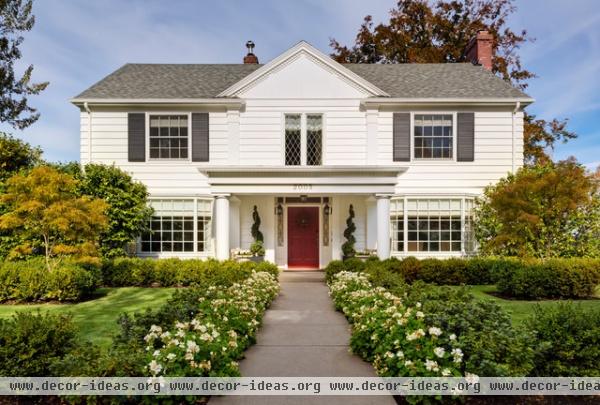
Every house begins with four walls. The most common configuration is a rectangle. Of course, most newer houses break out of the rectangle at some place on their plan. In the minimalist traditional style, the plan is usually kept compact (with minor exceptions) in overall form, as evidenced in all of these examples.
On this house the rectangular plan is stacked logically with the second level. The roof configuration is a simple side gable with a front-facing centered gable for decorative effect. Some classical details define it as traditional, but the proportion and arrangement of the windows depart from precedent. Notice the two large bay windows on the first level. This distinguishes the house without adhering to classical order.
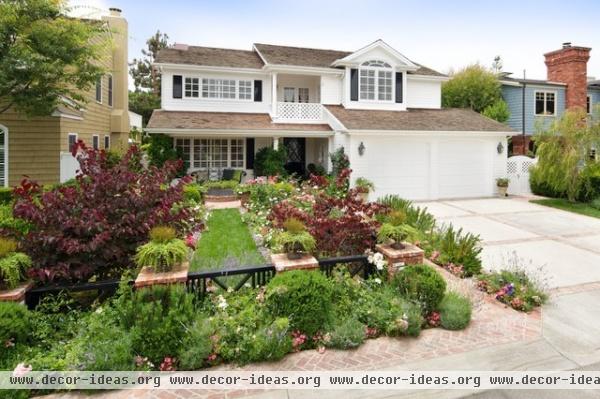
The roof shape is the next defining element to the style of a house. Other than the walls or plan of the house, the roof shape establishes the overall impression of a house.
Notice the gable- and shed-roof forms on this California house. Typically side gabled, as on most minimalist traditional homes, the roof forms fall to the lower level, wrapping over the garage and around the second floor. The roof pitch is modest, and an accent of a forward-facing second-floor window gains attention with its own gable-roof form.
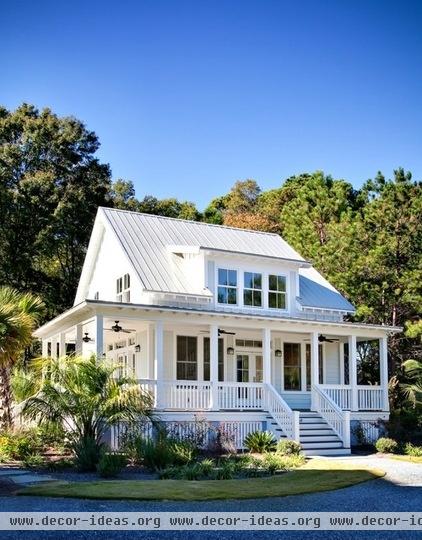
Next, the eave of a house is an important point to define its style. This critical detail of the meeting of the roof and the wall wraps the house as a belt wraps around pants to tuck in a shirt. The chance for a signature and added interest occurs here.
In the minimalist traditional style, the eave is usually short and tight to the house. In this example the rafter tails are left exposed, giving it an informal flavor. Often the rafter tail is covered with a fascia board and boxed underneath with a soffit board, as in the first two houses.
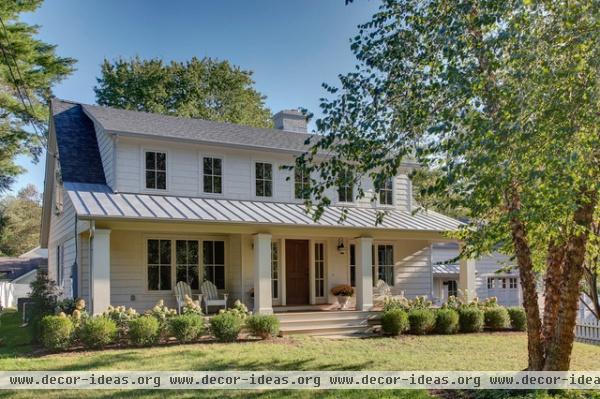
Most houses have some type of porch, whether it be on the front, back or side. In some styles porches wrap around most of the house. The roof of the porch can be under the primary roof form, or it can be an extension of the roof. The posts of the porch also contribute substantially to a style.
In minimalist traditional homes, the porch is usually some type of extension, as is the case in this example. The posts are large, square columns, as opposed to a classical order, as are the columns in the first example. The porch is usually a type of roof extension, and posts are normally less formal and simply detailed, as seen in the other examples.
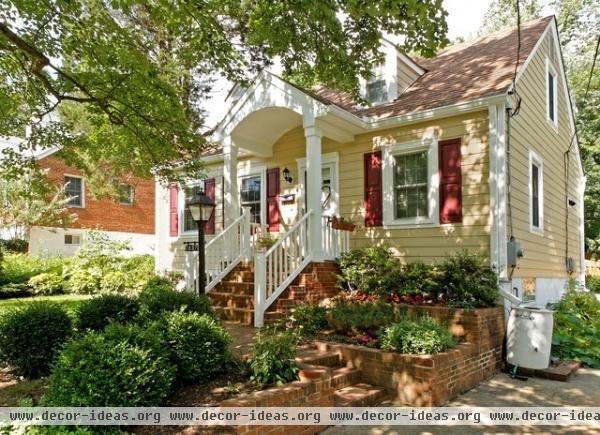
Once you have the shape of the walls, roof and porches and how they meet, consider the materials used to assemble those elements. Similar to how a shirt covers the body, the materials cover the house and contribute to the appearance and style of the structure.
Since minimalist traditionals are common in most regions, the types of materials to clad them vary widely. Clapboard, board and batten, stone and brick veneer all occur in this style in numerous variations. The common thread, however, is that the indigenous practices of local tradespeople usually determines the choice. Clapboard siding is a common material in the area where this house is, and limestone veneer is a common local finish in Central Texas, where the next house is. The last house, in Atlanta, has brick veneer, a common exterior cladding in that area.
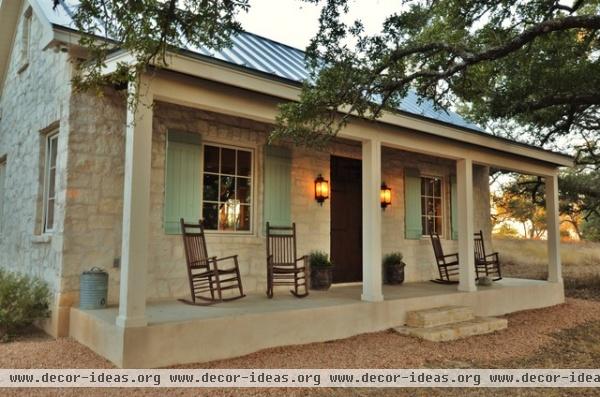
Notice the simple columns, shed porch roof and stone veneer on this house. While each of the houses presented here may be described in local terms, such as "hill-country cottage," they all share characteristics of minimalist traditionals.
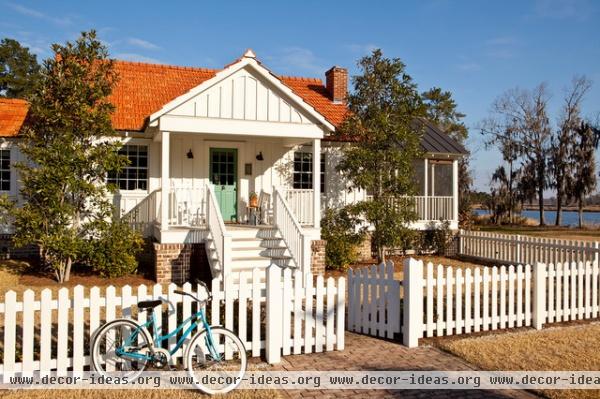
The next significant element that can determine a style is the entrance door. Usually a prominent feature on most houses, it is often a focal point on the front elevation. This important feature can often emphasize a style and ensure the character of a house.
In minimalist traditional homes you will find both the entrance door and most interior doors in a panel design. In the case of this house, its entrance door has glazing in the upper half. The panel door is a traditional design, as explained by Houzz contributor Bud Dietrich.
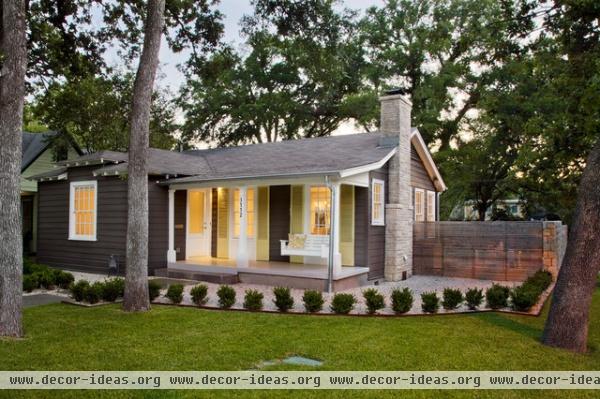
Window design dramatically affects character and style. As the eyes are the windows to a soul, so do windows reveal the soul of a house. A good-quality and carefully detailed window hints at the consideration of design throughout. The two most common types of windows found in traditional designs are double-hung and casement, seen in all of these examples.
In this quaint and minimalist traditional cottage, beautiful windows provide almost all of the charm. All else here is very simple and basic.
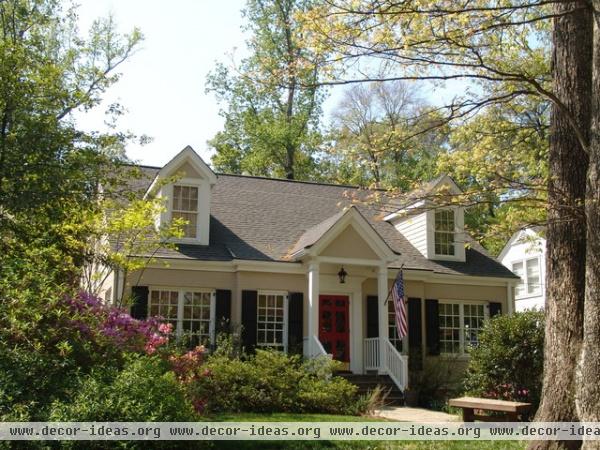
The last consideration in identifying the style of a house is ornamentation or decoration. This includes paint colors, shutters, light fixtures and any other finishing touches.
Notice how this house closely resembles a Cape Cod colonial. However, upon closer inspection, you'll see there are only two dormers instead of three, there are two grouped double-hung windows on the outer front elevation, and there are two windows set in a projection of the elevation. It has a classically detailed entrance surround and a tiny porch. The color scheme, with a red entrance door, is a favorite in this style.
More: Tracing Your Traditional Home's Classic Ancestors












